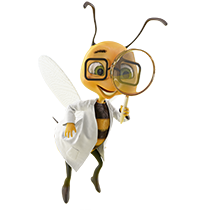Take out of the box:

stirring rod

jar with a lid

water glass 100 ml (sodium silicate)

deionized water 100 ml

pentahydrate copper (II) sulfate (VI) 2 g

heptahydrate iron (II) sulfate 2 g

heptahydrate magnesium sulfate 2 g

hexahydrate iron (III) chloride 2 g
Two of those:

microwave

oven

stove

pot filled with water
 FIRST AID INFORMATION
FIRST AID INFORMATION
In case of contact with the eye(s): wash out the affected eye with plenty of water, holding the eye open if necessary. Seek immediate medical advice.
If swallowed: wash out the mouth with water, drink some fresh water. Do not induce vomiting. Seek immediate medical advice.
In case of inhalation: remove person to fresh air.
In case of skin contact and burns: wash the affected area with plenty of water for at least 10 minutes.
If in doubt, seek medical advice without delay. Take the chemical and its container with you.
In case of injury always seek medical advice.
 ADVICE FOR SUPERVISING ADULT
ADVICE FOR SUPERVISING ADULT
Each SmartBee kit is intended for conducting experiments for children over 8 years of age. Because children’s abilities vary so much, even within age groups, supervising adults should exercise discretion as to which experiments are suitable and safe for their children.
Read and follow these instructions, the safety rules and the first aid information, and keep them for reference.
Be sure to thoroughly discuss the warnings and safety information with your child or children before commencing the experiments. Follow them and keep them for reference. Remember: misuse of chemicals can lead to injury or cause serious harm to health.
Carry out only those experiments that are listed in the instructions, using the equipment provided in the kit.
The area surrounding the experiment should be kept clear of any obstructions and away from the storage of food. It should be well lit and ventilated and close to a water supply.
A solid table with a heat resistant top is recommended for carrying out the experiments.
 SAFETY REGULATIONS
SAFETY REGULATIONS
Read these instructions before use, follow them, and keep them for reference.
Keep young children, animals and those not wearing eye protection away from the experimental area.
Always wear eye protection.
Store this experimental set out of reach of children under 8 years old.
Clean all equipment after use.
Make sure that all containers are fully closed and properly stored after use.
Ensure that all empty containers are disposed of properly.
Wash hands after carrying out experiments.
Do not store foodstuffs in any container which has held a reagent. Dispose of such containers immediately after use.
Do not use any equipment which has not been supplied with the set or recommended in the instructions for use.
Do not eat or drink in the experimental area.
Do not allow chemicals to come into contact with the eyes or mouth.
What are we going to do?
We’re going to make an underwater garden of colour salts in a jar. We’ll decorate it and observe the forms that grow there.
- A chemical reagent is used in this experiment. Protect your skin and eyes. Protect the tabletop from damage.
- If you have long hair, use a hair tie.



Don’t contaminate the deionized water.
- Important: Deionized water is very pure and easy to contaminate. Even the smallest impurity can spoil the experiment. Pour deionized water into the jar; put the lid on loosely (don’t twist it).



Heat the jar with its contents to about 90°C, don’t bring it to the boil.
- Hot water! This step is taken by an adult.
-
CURIOSITY: Measure the temperature with the naked eye
In this trick (without a thermometer!)... bubbles will help you!
about 71°C – bubbles the size of a shrimp’s eye appear at the bottom
about 79°C – bubbles bigger than a crab’s eye
about 85°C – bubbles grow to the size of a fish’s eye and float off the bottom
about 91–96°C – you can see a continuous
stream of pearls. Bubbles rising to the surface are a sign that the water will start boiling at any moment!



Add the water glass
(sodium silicate)
Slowly pour the water glass down the stirring rod. Stir until the substances combine. Wait 1 minute.



What is a chemical reaction?
Add salts
Take the moisture absorbers out of the containers. Add the contents of the four salt containers to the solution, each one in a different part of the jar. Do not stir. Follow this sequence: magnesium sulfate copper sulfate iron sulfate iron chloride



The chemical garden is growing!
After just a moment, you’ll see that instead of dissolving in the water, the salts create underwater chimneys!



Let the chemical plants grow
Your chemical garden will grow for around 10 minutes. Try to avoid shaking it as this will shatter the delicate structures. You can use it as a decoration, but the solution becomes cloudy after several days.



Did you know that the Statue of Liberty was once golden?
Illuminate and decorate
The chemical garden is at its most beautiful when it’s illuminated from the bottom. You can garnish the jar with some stickers or paint sea monsters on it. Voilà, the jar transforms into a coral reef or a forest of seaweed.



.
HOLOGRAM SURPRISE
we build our own instrument to display an animated hologram
Take out of the box:

hologram foil – four trapezoid pieces
Prepare at home:

a smartphone with SmartBee Club AR application

transparent adhesive tape
What are we going to do?
We’re going to build our own instrument to display an animated hologram.



Unfold the trapezoids
Remove the protective foil.



Put together a pyramid
Glue the edges together with pieces of a transparent adhesive tape attached so that they form a pyramid with a cut-off tip. This is the holographic screen.



Open the application

- Open the SmartBee Club AR application on your smartphone.
- Click the “HoloBee” tab.
- Point the smartphone lens at the picture you see below and wait for the animation to start.

The performance of the app may vary on different smartphone models. It might also be affected by the display brightness. An internet connection is necessary.



Put the pyramid on the phone
Place the pyramid upside down on the smartphone screen, as shown in the picture.



Turn off the lights and see the hologram!
A hologram appeared on the walls of the pyramid: Beezy floating above the screen!
- How did this happen?



A holographic projection
Keep the holographic screen
Don’t throw the pyramid away. In future kits you’ll find a hologram super bonus to study with the help of a smartphone!



The conclusions from these experiments
We can see colours thanks to our brain. Something is red or green to us because of a sensory impression. But is colour only an impression, or does it really exist?
No – colours have their reference to reality. Before our brain processes information and assigns them to specific impressions, such as ‘red’ or ‘green’, light of particular properties must reach our eyes.
Sources of light glow thanks to physical and chemical reactions inside them. The colour of non-glowing objects is determined mainly by their chemical composition. Different atoms and particles reflect and absorb light in varying degrees. That’s why we can enjoy the spectacular beauty and diversity of colours in the world around us.
In this experiment, you’ve seen that even the simplest chemical reactions can be interesting and please the eyes with a blaze of colours. You’ve seen with your own eyes that chemistry can be spectacularly beautiful!

Clean the stand and wash the accessories.
Where to dispose of the substances? Please follow your national regulations.